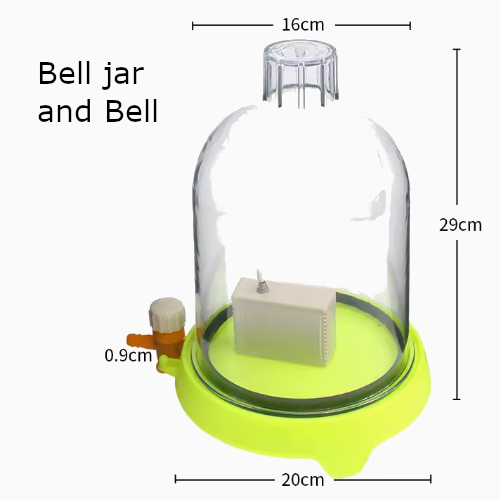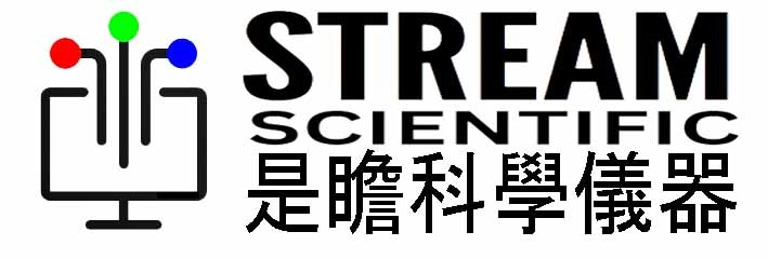
Plastic Vacuum bell jar and a ringing bell
塑料真空罩和響鈴
HK$1062.00
The experiment involves a vacuum bell jar and a ringing bell. This experiment is often used to demonstrate the effect of removing air from a space and how it affects sound transmission.
The setup typically includes a glass bell jar with an airtight seal and a small bell or chime placed inside the jar. Initially, when the bell jar is not evacuated and is filled with air, the sound produced by the bell can be heard clearly outside the jar. As the experiment progresses, a vacuum pump is attached to the bell jar, and air is gradually removed from the inside. As the air is pumped out, the pressure inside the bell jar decreases, creating a partial vacuum.
As the vacuum is formed, you will observe that the sound of the ringing bell becomes fainter and eventually completely disappears. This occurs because sound waves require a medium, such as air, to propagate. In a vacuum, there is no air or any other medium for the sound waves to travel through, resulting in no audible sound outside the jar.
The experiment demonstrates that sound cannot travel in a vacuum due to the absence of air or any other suitable medium. It highlights the importance of air as a medium for sound transmission and reinforces the concept that sound waves require a medium to propagate.
It's worth noting that while this experiment showcases the effect of a vacuum on sound transmission, it does not directly demonstrate the principle of equal acceleration and fall time for all bodies in a vacuum, as the previous experiment discussed.
實驗涉及真空罩和響鈴。 此實驗通常用於演示從空間中去除空氣的效果以及它如何影響聲音傳輸。該裝置通常包括一個帶有氣密密封的玻璃鐘罩和一個放置在罐內的小鈴或鬧鐘。 最初,當鐘內未抽真空且充滿空氣時,鐘罩發出的聲音可在罐外清楚地聽到。 隨著實驗的進行,鐘外馱駁上裝有真空泵,逐漸從內部抽出空氣。 當空氣被抽出時,鐘罩內的壓力降低,形成部分真空。隨著真空的形成,您會觀察到鈴聲變得越來越微弱,最終完全消失。 發生這種情況是因為聲波需要介質(例如空氣)才能傳播。 在真空中,沒有空氣或任何其他介質可供聲波傳播,因此罐子外面聽不到聲音。
該實驗表明,由於缺乏空氣或任何其他合適的介質,聲音無法在真空中傳播。 它強調了空氣作為聲音傳播介質的重要性,並強化了聲波需要介質傳播的概念。
值得注意的是,雖然這個實驗顯示了真空對聲音傳播的影響,但它並沒有像之前的實驗所討論的那樣直接證明真空中所有物體的加速度和下落時間相等的原理。

